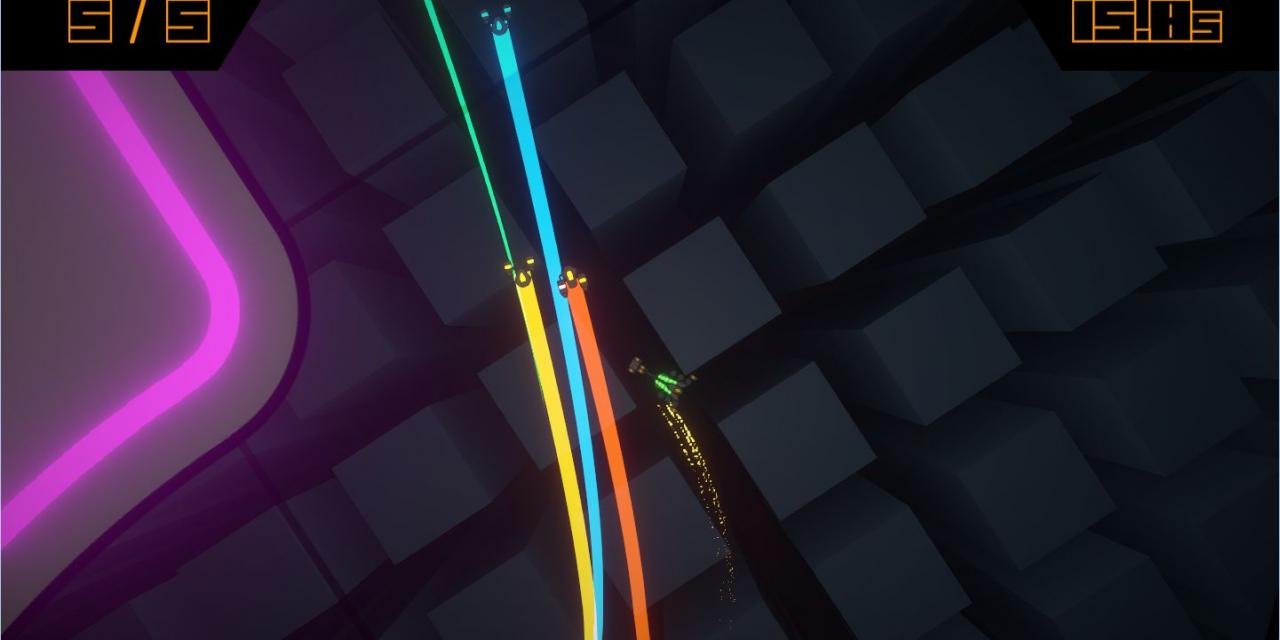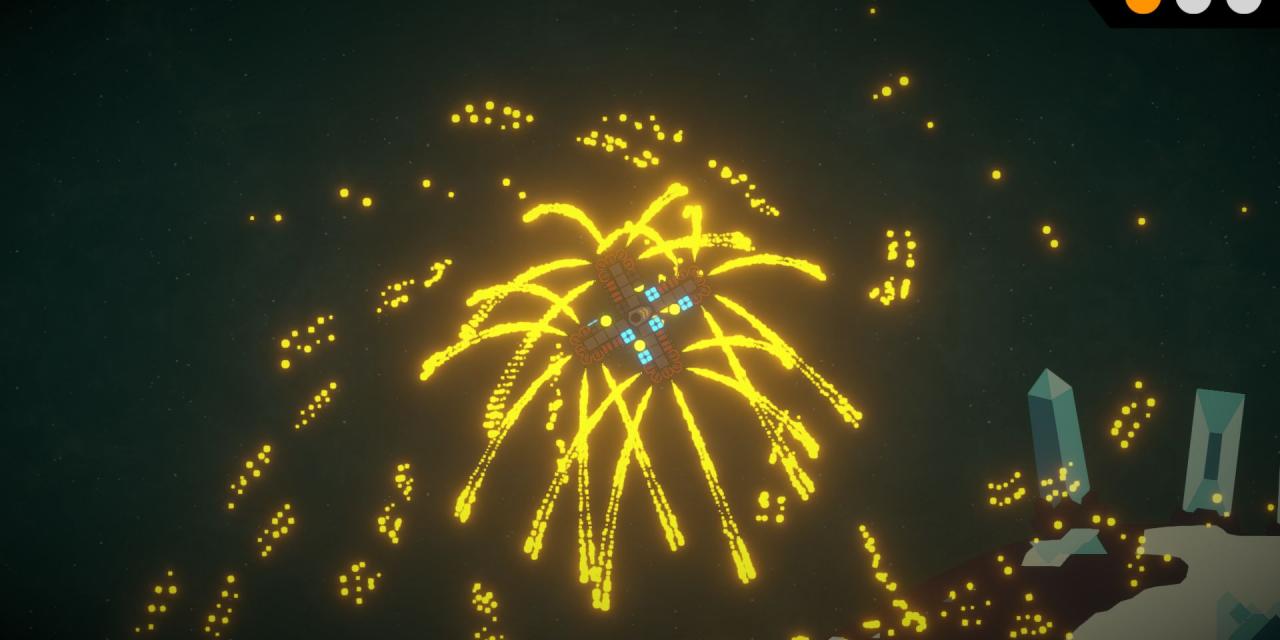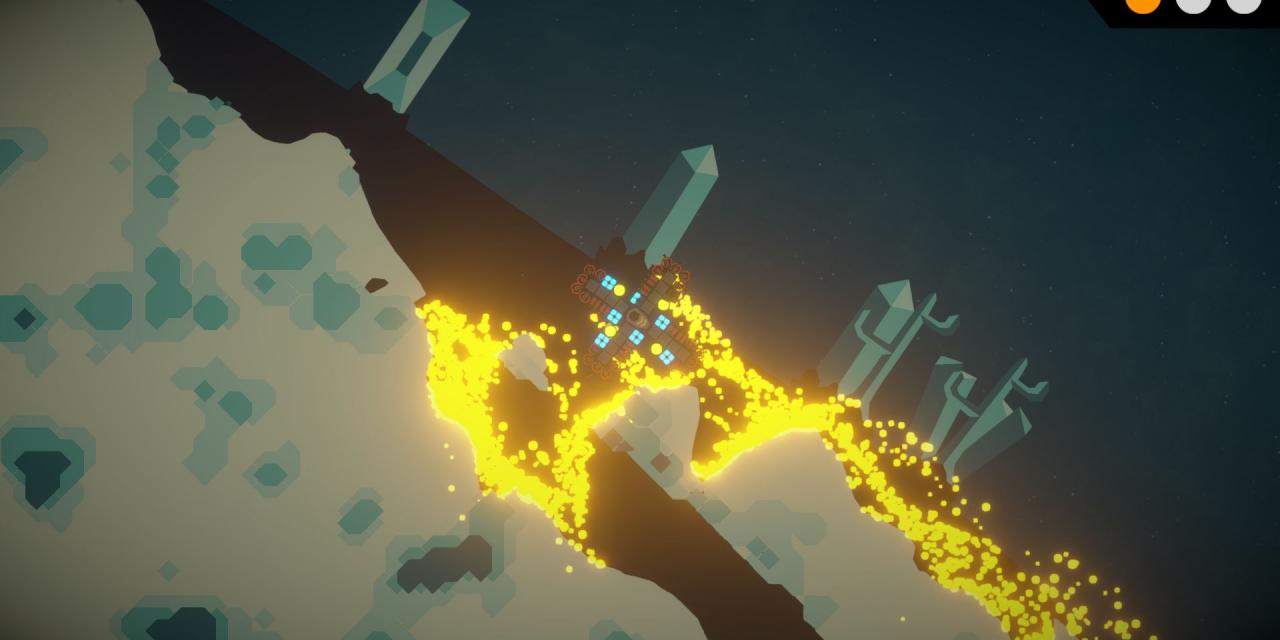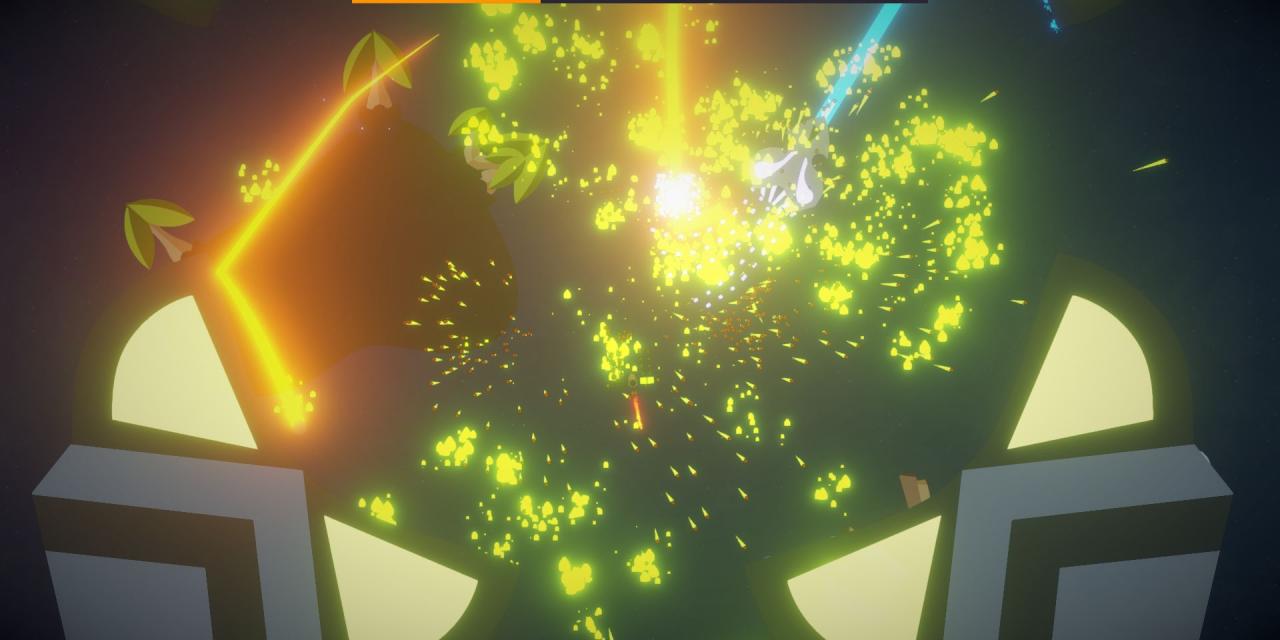



- PC
Guide to the Galaxies: Armor:
In this guide, you will learn not only about appropriate armor formats for
various mission types, but also core armor mechanics and information on the
physics engine at large to help you make informed designing decisions.
Prologue, Notes:
This guide will focus primarly on building methods over individual missions.
However, know that all missions will be discussed individually, and armor will
be given for each mission type.
Before anything, it's important to remember these facts:
Connections directly to the drone core will always, with 0 exceptions, be the
most stable, followed by connections to decoupled decouplers and decoupled
factory-printed parts connected immediately after the factory.
Any gaps in connections will cause additional instability, but filling in gaps
will return stability.While picture may appear from Demo, this doesn't hurt the guide as these methods will always be relevant until something silly like connecting one part to multiple other parts happens.
Armor Weaving:
This is the act of creating interlocking sections, which causes multiple strands of connections to pull and tug on, and ultimately reinforce, those connections in a way that stops large drones from collapsing while allowing them to have massive holes in its internal area.
This allows you to create replicating fuel holds that can hold and eventually dump fuel tanks, create turret wells to have mutliple weapons aiming in a spread in a single direction, have ammo racks that hold TNT missiles (although this functionality can be replicated by a Factory, this allows multiple missiles along the same chain to be sequentially fired from a large clip) to be fired, have missile-guiding barrels, or even just reinforce massive or long wobbling structures so they are more rigid and less likely to snap in half when going too fast in a direction.
Notice here how, if the parts were rotated correctly, they would create an interlocking section that would assist in holding the 2 "arms" together, allowing massive amounts of armor and saving space (and graphics) from shields.
Identifying Temperature Issues:
Temperature, unlike Armor Weaving, is a newer Nimbatus feature that forces you to make sure your drone doesn't go up in a blaze of magma-y glory or freeze and permanently disable your thrusters until you restart or regen your thrust with factories (although your factories will be disabled too, most likely.)
When dealing with temperature changes, here's something you should know: Temperature is really, really weird right now. First, you're hit with a temperature change of some sort. Maybe you flew into the core of a magma world, maybe you ran over a lava geiser, maybe even a meteor happened to hit you while you were flying around, or maybe your logic went all screwy and set off your coolers and heaters and now your drone is a remix of Spiderman and His Amazing Friends when they first meet each other. Whatever the issue, you now have a block that isn't 10 degrees celsius (the normal temperature of a drone). This is a huge issue. What will happen from this point is the temperature
will directly clone itself onto adjacent, immediately touching blocks. At least, that's how it feels, but you can probably quote me on that for now and I'll own up to it.
What I think is happening, there's a "temperature points" sort of system, where
temperature points are added or subtracted from a base of 0 (10 degrees c), and from there it's copied across to the next block, and so on so forth across the entire drone. Afterwards, it takes that and compares it to the max points it can hold and creates a percentage, and if the percentage is beyond 100% it's set on fire and is dealt damage over time, or if below -100% it's frozen and becomes functionally inoperable until it's destroyed or replaced via factory.
Most parts have the same maximum/minimum temperature points, save armor when set to "heat resistant", which has more heat capacity, or "cold resistant", which can handle even more negative temperature points. This makes these parts have a lower percentage than their neighboring blocks of different types, which leads us on to the next section.
Fixing Temperature Issues:
Heat- and Cold-resistant armor plates will remove temperature and negative temperature points respectively from themselves at a massively increased rate compared to normal armor and functional parts, making them effective at quickly resetting the temperature of touching parts across a drone, but not only do they have their own limits, but they sometimes aren't quick enough.
Coolers can rapidly freeze things locally, and heaters do the opposite, so they can be used to create a quick burst of temperature to offset extreme amounts of heat or cold that could be spreading across and disabling your drone.
These two methods are both effective at preventing your drone from being destroyed by non-bullets, but temperature resistant armor has less actual health, so remember to put on layers when you explore with this armor.
Mission suggestions: Sumo Tourniment:
Armor in the Sumo Tourniment is a different beast than in normal galaxy missions.
You aren't armoring against bullets or heat, you're armoring against collsions.
When you do sumo, your goal is to push or deflect your opponent out of the ring. How you do that is up to you, but know that collisions are what you're against. Normal damage rules are tossed out the window since some drones are specially made to detonate on contact with you, which can destroy your drone much more effectively than even conventional weaponry, and some drones don't even explode when they slam into you repeatedly.
What's most important when building a Sumo drone is maximizing stability. Not letting ANY gaps occur and making sure all parts are as connected to the center of the core or the decoupler as they can be are your priorities above all else. Your health pool is meaningless, and instead you should have minor armor at most to perform minor external armor weaving so you don't implode from random stretching over violent accelerations.
Of course, simply the act of accelerating can create gaps, so it's your duty to make sure you can balance sheer force with stability and redundancy so if you do take damage you don't go down entirely or doom yourself against given match ups.
Mission Suggestions: Destroy Hives:
The most straight-forward mission, your goal is to survive bugs while destroying their hives across the planet.
This mission will involve you moving around a normal planet, destroying hives that may appear underground or (accidentally) protected by Corps turrets, cannons, and drones. You will need some amount of armor, but shielding will prove usefull to have something so stop permanent damage from scratching your armor or internals. You'll need to keep your armor light so you can be fast, in case searching for the hives takes a long while, and you'll need to stay maneuverable in case you end up in a cave while searching.
Mission Suggestions: Destroy the Transmitter:
Another straight forward mission, your goal is to destroy the transmitter on the world.
This mission will thrust you into a siege on a transmitter, which will be guarded by Corps cannons and turrets. Cannons will prove incredibly dangerous, as their shots... aren't really balanced... You'll either need heavy armor or minimal armor to tank or avoid cannon shots while both dealing with the Corps drones defending the transmitter and the transmitter itself.
Mission Suggestions: Destroy Snake Eggs:
In this mission, you will be destroying snake eggs while avoiding a large, occasionally hostile snake that will chase you when you destroy multiple eggs.
You'll want to have light, shedable armor to handle damage from Corps defenses or bugs that might be in the world while you search for the eggs. You'll want this armor to be able to be removed so when you destroy the egg you can maximize speed and maneuverability to avoid the snake that will chase you afterwards, but you'll want this armor to be
rebuilt with a factory so you can stay protected from passive hits while you search.
Mission Suggestions: Aquire Bio Barrels:
In this mission, you'll be grabbing Bio-barrels and transporting them to the resource drop-off box
How you go about grabbing them is up to you, be it by a motorized claw or a magnet, but you will go against Corps turrets that you will need to protect the Bio Barrels and yourself from, along with potential bugs that may be in the world. You'll want a lighter armor if you carry bio barrels externally, for maximum speed, or spaced medium rebuildable armor for internal mass-transport to stop Corps cannons and big bugs from hitting the barrels.
Mission Suggestions: Destroy Hammer Head Shoals:
In this mission, you'll be destroying 3 Hammer Heads.
You'll need medium temperature-resistant armor layers to both resist the impact of the hammer heads and the temperature changes you'll encounter from being near them. Make sure your armor is stable and dense so you can withstand impacts from them, and have heat sinks in case you run across the magma world bugs, which deploy seeking heat orbs, or across lava Geisers. You can be attacked by Corps turrets, so watch out for them too.
Mission Suggestions: Destroy Hammer Head at the Core of the Planet:
In this mission, you will search and destroy a single Hammer Head deep in a lava planet's core
You will need to remain maneuverable and fast enough to both avoid the hammer head deep in the planet, navigate the cave systems to find the hammer head, avoid geisers and lava planet bugs, and avoid the magma core's expanding motion. You will still need temperature-resistant armor so you don't burn during the hammer head fight or while searching for the
hammer head.
Mission Suggestions: Freeze the Lava Geisers:
In this mission, you are freezing Lava Geisers.
You will need temperature resistant armor of some amount to resist temperature changes from the environment or from the geisers themselves, but you are at your leisure in choosing armor as long as you can move and accomplish the mission.

